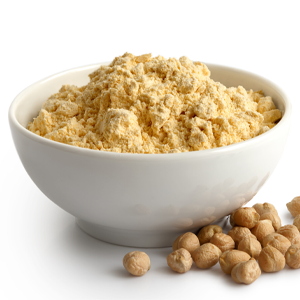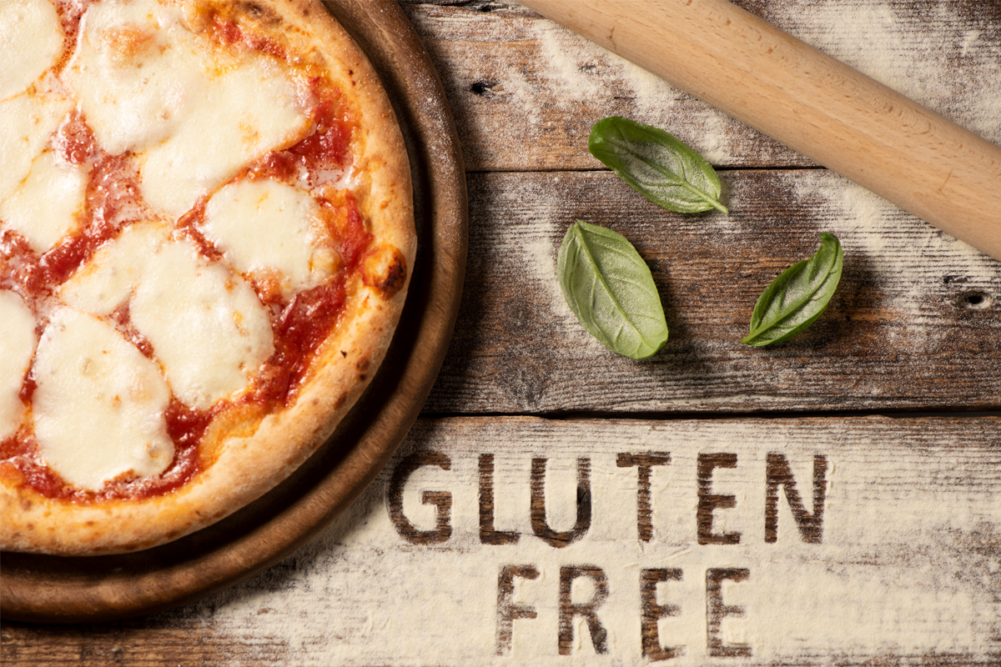CHICAGO — While traditionalists may be appalled at the idea of using anything other than semolina for pasta or wheat flour for Neapolitan pizza, it’s being done — and successfully. Over the past decade, food science has helped product developers break the rules of tradition in pizza and pasta by enabling the elimination of gluten with replacement ingredients. In some instances, the traditional high-carbohydrate foods have become sources of protein and fiber.
In 2019, retail dollar sales of gluten-free varieties of pizza and pasta ended the year up 52% and 15%, respectively, according to IRI, Chicago. The gluten-free claim suggests to shoppers the product may be a healthier version of the traditional takes.
“During 2020, there was a lot of pantry loading, which caused double-digit growth in almost all categories,” said Ricardo Rodriguez, marketing manager-bakery and confectionery, Ingredion Inc., Westchester, Ill. “Eventually that growth stopped for regular pizza and pasta and then declined drastically in 2021. Both are still recovering and showing negative growth. While retail sales of gluten-free pizza and pasta flattened in 2021, both have bounced back quicker as consumers seem to have stayed with healthier choices.”
Retail sales of gluten-free pizza and pasta are showing around 3.5% growth thus far in 2022, according to IRI. And according to research firm Technomic, Chicago, one-fourth of Americans are interested in eating pizza featuring crusts made with alternatives to wheat flour.
“Gluten-free pizza and pasta were demonstrating strong growth before the pandemic, and that growth has only accelerated,” said Ross Fenderson, director of product management for specialty ingredients, Bay State Milling Co., Quincy, Mass. “We have seen an evolution in the ingredients that brands are formulating with — from functional gluten-free grains like corn and rice to ancient grains to grain-free ingredients, like chickpeas, lentils and vegetables — that have a healthier nutrient profile.”
Wheat flours are used to make pizza and pasta because they are highly functional and have neutral flavor. It’s the gluten that provides the function, which is why removing gluten presents challenges, more so for pizza crust than pasta.
“Gluten is a combination of two proteins, glutenin and gliadin, and that provides the perfect combination of stretch and strength that allows dough to entrap the gas formed by yeast when fermenting resulting in a soft but chewy crust,” said Nicholas Ahrens, manager – business development specialty ingredients at Bay State Milling. “Gluten-free ingredients obviously lack gluten proteins and therefore rely on less functional proteins and starch to do the work to create texture and mouthfeel. Different protein profiles can perform very different functionalities, from emulsification, texturizing and foaming/gas entrapment for leavening.
“Each individual grain variety not only has its own unique starch ratio; the physical side of the starch granules can range from the minute three microns of rice to over 28 microns with traditional wheat. All these physical and chemical properties create very different and unique dough characteristics.”
There are four main challenges when developing gluten-free pizza and pasta. The first is processing.
“The lack of viscosity or elasticity of the non-wheat-containing dough leads to difficulties in processability and machinability,” Mr. Rodriguez said.
Mr. Ahrens added, “As with any formula, batch consistency is a must. Proper hydration of gluten-free ingredients is critical because many of the hydrocolloids or plant-based proteins used to substitute in for gluten aren’t as strong as gluten. Just a small amount in the water variation can make a gluten-free pizza dough too strong or too weak.”
Proper and even hydration of gluten-free extruded pasta is even more critical when working with such a low-moisture dough.
“When adding additional hydrocolloids and additives to gluten-free pasta you may want to give a little more mix time to ensure even hydration,” Mr. Ahrens said. “Improperly hydrated doughs can lead to extrusion pressures rising and dropping, creating inconsistent shapes and product strength.
“With gluten-free extruded pasta it is important to gelatinize enough starch to set the structure, creating the fibrillar strength for long noodles. This means either adding enough water to the dough plus heat and steam or a pre-gelled starch to the dough side.”
The second challenge is sensory. Texture, taste and appearance may be an issue due to reduced volume, lack of an even cell structure, dry/crumbly or grainy texture and poor color. It is easier to hide some of these issues with a pasta sauce, but they are apparent in pizza crust.
“Time and temperature are by far the most important ingredients you never see on the label,” Mr. Ahrens said. “As with all doughs, gluten-free doughs are living and breathing, changing as both time and temperature progress. If a processor is experiencing inconsistencies in the dough or finished product, the first place to start is to determine if anything changed in the process. Is the dough hotter or colder? Did the processing line stop and restart due to mechanical issues? All of these changes can greatly affect the gluten-free dough that is less resilient than traditional wheat-based doughs.”
The third challenge is shelf life.
“Shorter shelf life and increased staling rates due to increased water mobility are issues to be solved,” Mr. Rodriguez said. “Fourth is rebalancing the nutrition profile. Removing certain gluten-containing ingredients affects protein, nutrient and fiber levels. Plus, increased sugar or fat usage to mask texture and flavor impacts the overall nutrition profile and label appeal.”
While wheat is a plant, use of cauliflower, legumes/pulses and varied seeds appeals to a growing number of consumers looking for claims such as “plant-based” or “plant-based protein” on product labels.
Ingredion has a range of plant proteins, pulse flours and quinoa flours that can boost protein and fiber in gluten-free pizza and pasta. Some may assist with replacing egg whites in the doughs, which eliminates a known allergen.
“Plant-based proteins help to retain pasta structure, color and aroma,” Mr. Rodriguez said. “And in pizza, pulses help with crust texture and color.”

Bay State Milling offers a range of gluten-free ingredient solutions, including rice flour, ancient grain flours and chickpea flour. They come in a variety of granulations and specifications so the system may be optimized for a manufacturer’s in unique extrusion and baking processes.
“We have, for example, developed a dehulling technique for our chickpeas that consistently removes nearly 100% of the fibrous hull, enabling us to achieve a uniformity and appearance that is optimized for pasta applications,” Mr. Ahrens said.
With many pizza crusts and pastas, innovators take a systems approach and use a variety of ingredients to replace wheat flour and its functions. Nestle USA, Glendale, Calif., for example, has reformulated its frozen DiGiorno gluten-free pizza to now include “wheat starch,” which allows for a crust that has a bready, thicker texture than the brand’s original gluten-free offerings.
Wheat starch is the second ingredient, after water. It is blended with modified rice starch, buckwheat flour, flaxseed and guar gum. The wheat starch is extracted from wheat and rinsed to remove the gluten. Its use meets the US Food and Drug Administration’s requirements for a gluten-free food, which states that any food labeled gluten-free must contain less than 20 parts per million of gluten. Other countries and international bodies use these same criteria, as most people with celiac disease can tolerate foods with very small amounts of gluten, according to the FDA. The caveat, the allergen wheat is present.
Nestle’s Life Cuisine gluten-free pizza takes a different approach. The focus is on reducing carbohydrates and increasing protein. The No. 1 ingredient in the yeast-raised crust is cauliflower, which is blended with rice flour, low-moisture whole milk mozzarella cheese, rice starch and flax meal. The cheese contributes fat and protein, while the flax meal, which comes from naturally low-carbohydrate flaxseed that forms a gelatinous mass when hydrated with water, assists with building a gluten-like network for air entrapment. The composition positions the pizza as a keto-friendly food with 15 grams of fat, 18 grams of protein, 4 grams of fiber and 7 grams of total sugars. Two grams are added sugars.
New York-based Banza uses chickpeas to recreate all types of classic comfort foods, including pizza, pasta and even macaroni and cheese. They are all formulated with more protein and fiber and fewer net carbohydrates than their conventional counterparts.
With the pastas, semolina is swapped with chickpea flour and a few label-friendly hydrocolloids (pea starch, tapioca and xanthan gum). Chickpea flour is gaining momentum in the gluten-free marketplace due to its nutritional and functional attributes, including its neutral color and bland flavor as compared to some other legumes.

